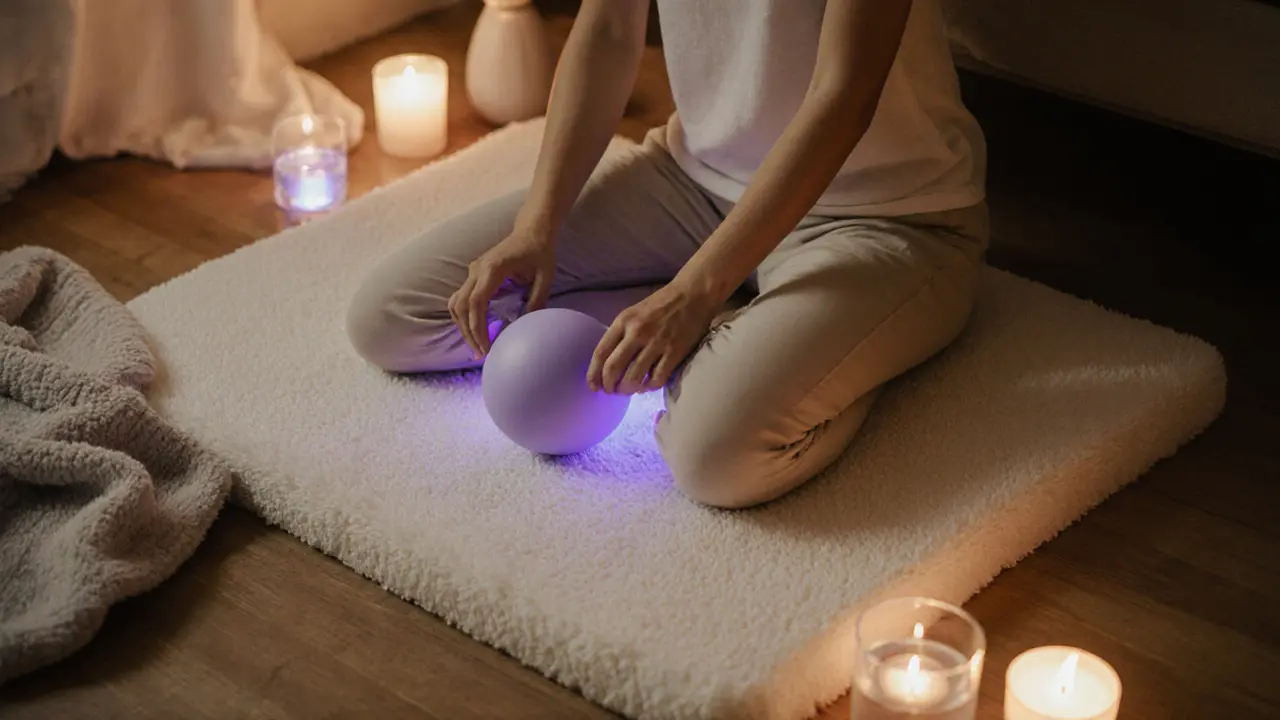Feeling constantly on edge? A well‑chosen relaxing massage can be the shortcut you need to drop the tension, clear the mental fog, and feel ready for whatever comes next. Below you’ll learn why certain massage styles work best for unwinding, how to set up the perfect environment, and even some DIY tricks you can try at home without booking an appointment.
Why relaxation matters for body and mind
When stress spikes, your body releases cortisol and adrenaline. Over time, high cortisol levels can mess with sleep, appetite, and immune function. Engaging the parasympathetic nervous system the “rest‑and‑digest” branch that counters the fight‑or‑flight response is the most direct way to bring cortisol down.
Massage does exactly that. Light pressure, rhythmic strokes, and warm touch signal the brain to shift gears, flooding you with feel‑good chemicals like serotonin and oxytocin. The result? Lower heart rate, deeper breathing, and a mental reset that feels almost magical.
Massage styles that specialize in relaxation
Not every massage is built for the same purpose. Here are the three most popular types that focus on soothing rather than deep muscle work.
- Swedish massage a gentle, flowing technique that uses long strokes, kneading, and circular motions to promote circulation and relaxation. Ideal for first‑timers, it keeps pressure light enough to avoid lingering soreness.
- Aromatherapy massage combines traditional Swedish strokes with carefully selected essential oils that enhance mood and reduce anxiety. Lavender, bergamot, and ylang‑ylang are the usual suspects for calming effects.
- Hot stone therapy uses warmed basalt stones placed on key points of the body, allowing deeper muscle relaxation without heavy pressure. The heat encourages blood flow and melts away tension.
If you prefer stronger pressure, Deep tissue massage targets deeper muscle layers and connective tissue, which can feel uncomfortable for pure relaxation seekers. It’s better saved for chronic pain rather than everyday unwind sessions.
Preparing the perfect environment
The setting can make or break the experience. Follow this quick checklist before you lie down on the table or mat:
- Dim the lights or use soft amber lamps. Bright, blue‑rich light can keep the brain alert.
- Play low‑tempo music-think ambient, classical, or nature sounds. A steady 60‑70 BPM rhythm mimics a relaxed heartbeat.
- Set the room temperature between 24‑26°C (75‑79°F). Too cold spikes the sympathetic response.
- Choose a scent from essential oils highly concentrated plant extracts that influence mood through the olfactory system. A single drop of lavender in a diffuser works wonders.
- Keep a water bottle nearby. Hydration helps flush out metabolic waste released during the massage.
Even a simple foam mat and a few candles in a quiet corner can replicate a spa vibe if you’re doing it at home.

DIY relaxation techniques you can try today
Professional sessions are great, but you don’t always have time or budget for them. Here are three self‑massage methods that deliver similar calming benefits.
- Neck and shoulder roll: Sit upright, place a massage ball a small, firm sphere made of rubber or silicone used for targeted pressure between your shoulder blade and spine. Roll gently for 30 seconds each side while breathing deeply.
- Calf glide: Using both hands, stroke each calf from ankle to knee with slow, overlapping motions. This boosts circulation and reduces the “legs‑heavy” feeling after a long day.
- Hand‑to‑heart rhythm: Place one hand over your heart, the other on your abdomen. Breathe in for four counts, out for six, feeling the rise and fall of both hands. This simple breath‑body sync activates the parasympathetic system instantly.
Pair any of these with a soft playlist and a warm blanket, and you’ve basically built your own micro‑spa.
Quick reference checklist
Print or bookmark this cheat sheet for fast implementation.
- Identify your goal: pure relaxation vs. mild tension relief.
- Pick a massage style that matches the goal (Swedish, aromatherapy, or hot stone).
- Set the ambiance: lighting, temperature, music, scent.
- Hydrate before and after.
- Practice at least one DIY technique daily.

Comparison of popular relaxation‑focused massages
| Massage Type | Key Benefits | Typical Session Length | Best For |
|---|---|---|---|
| Swedish | Improves circulation, reduces mild tension, promotes overall calm | 60‑90 minutes | Beginners, stress‑relief seekers |
| Aromatherapy | Enhances mood, alleviates anxiety, adds sensory relaxation | 60‑75 minutes | Those who love scents, emotional unwind |
| Hot Stone | Deep muscle relaxation without heavy pressure, improves joint flexibility | 75‑105 minutes | People with stiff muscles, cold‑weather stress |
| Deep Tissue (Contrast) | Targets chronic pain, releases scar tissue | 60‑90 minutes | Athletes, chronic pain patients (not primary relaxation) |
Pick the row that matches your current mood. If you’re just looking to unwind after a hectic workday, Swedish or aromatherapy will give you the fastest calm.
Common pitfalls and how to avoid them
Even a well‑planned session can go sideways if you ignore a few simple rules.
- Too much pressure. If the therapist or yourself uses force that feels painful, cortisol may spike instead of drop.
- Skipping hydration. Without water, metabolic waste lingers, leading to post‑massage fatigue.
- Rushing after the session. Give yourself at least 15 minutes to sit quietly before jumping back into emails.
- Ignoring personal preferences. Not everyone likes scented oils or heat; customize to your comfort.
Mind these tips, and you’ll consistently walk away feeling refreshed.
When to book a professional versus DIY
If you have chronic health conditions-high blood pressure, recent surgery, or severe anxiety-consult a licensed therapist first. Professional hands bring training in anatomy, pressure distribution, and safety protocols that home techniques can’t match.
For everyday stress, a 20‑minute self‑massage routine combined with the right ambiance delivers almost the same hormone shift. Treat professional sessions as a monthly luxury and daily self‑care as the foundation.
How often should I get a relaxing massage?
For most people, a 60‑minute session once a month maintains low stress levels while giving enough recovery time between visits. If you’re dealing with high‑pressure jobs, bi‑weekly appointments can provide extra mental slack.
Can I combine aromatherapy with other massage styles?
Absolutely. Many therapists blend essential oils into Swedish or hot stone sessions. Just let them know about any skin sensitivities before the oil is applied.
What’s the best time of day for a relaxing massage?
Late afternoon or early evening works well because cortisol levels naturally dip and the body prepares for rest. Avoid late‑night sessions if you tend to feel energized afterward.
Do I need to book a specific therapist for relaxation?
Look for practitioners who list “relaxation,” “well‑being,” or “stress relief” as specialties. Reading client reviews for calm atmosphere and gentle pressure can help you choose.
Can self‑massage replace professional sessions?
Self‑massage is a great supplement, but it can’t fully replicate the full‑body reach and nuanced technique of a trained therapist. Use it for daily upkeep and schedule professional appointments for deeper reset.







Wow, this guide really hits the sweet spot for a busy mind. It’s cool how it breaks down the science without getting all nerdy. I’m definitely trying the hand‑to‑heart rhythm tonight :)
Excellent overview! The step‑by‑step checklist makes it easy to set up a personal spa. I especially appreciate the emphasis on hydration before and after a session. Thanks for the thoroughness.
Adding a bit of extra context: research shows that even a 20‑minute self‑massage can lower cortisol by up to 30%. The warm stone method also improves joint range of motion, which is great for anyone who sits a lot. Keep it up!
Oh great, another post telling me to chill with a stone, because that’s never been done before. 🙄